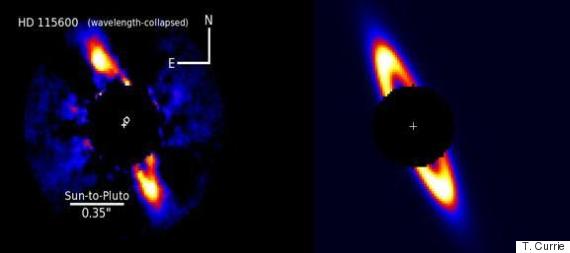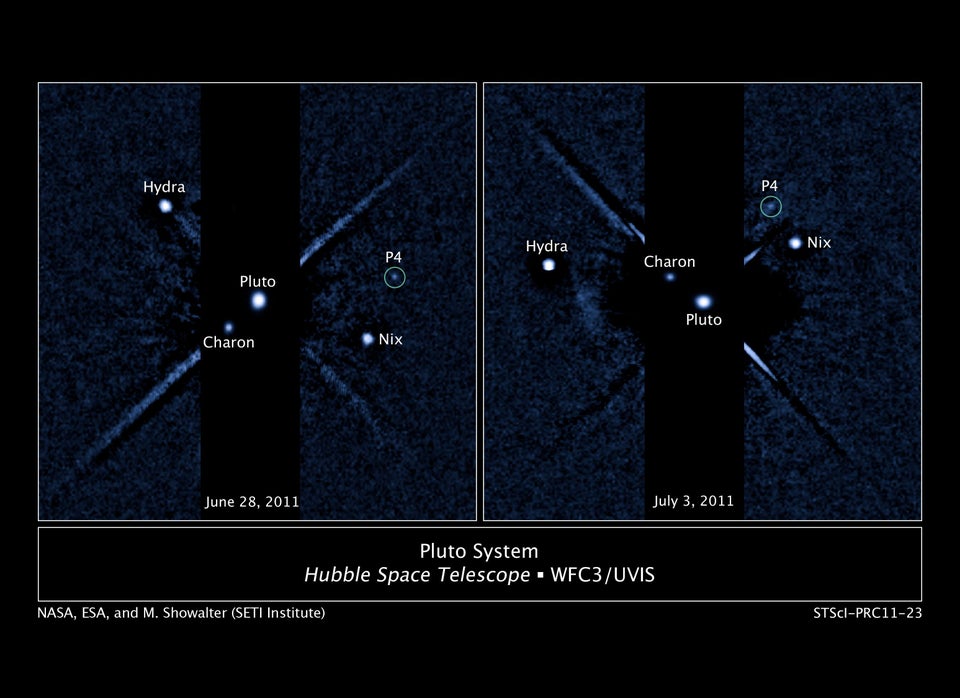What did the solar system look like in its early days, and exactly how did it evolve? No one knows for sure, because no one was around billions of years ago to snap a photo or watch the action unfold.
But astronomers are crowing about the recent discovery of a distant star system that--particularly in its outer regions--looks a lot like what the solar system must have looked like early in its evolution.
"It's almost like looking at the outer solar system when it was a toddler," Dr. Thayne Currie, an astronomer at the Subaru Observatory in Hawaii and the principal investigator of a new study about the star system, said in a written statement.
(Story continues below image.)
This composite image of the newly discovered star (HD 115600) shows a bright debris ring viewed nearly edge-on and located just beyond a Pluto-like distance to the star (left); and a model of the star's debris ring on the same scale (right).
The newfound system, which was detected with the help of the Gemini South telescope in Chile, is located 360 light-years away in the constellation Centaurus. It features a star slightly more massive than the sun that has a disc-like field of dust and ice surrounding it at a distance of 3.4 to 5.1 billion miles.
That's roughly the same distance as the sun to the Kuiper Belt, the region of space just beyond Neptune that contains icy debris left over from the formation of the solar system more than four billion years ago. The debris ranges in size from a speck of dust to moon-sized objects like Pluto, which is now considered a dwarf planet.
(Story continues below diagram.)
Diagram showing Kuiper belt.
No planets were detected around HD 115600, although the fact that its disc isn't perfectly centered suggests the presence of one or more planets, according to the statement. The astronomers are convinced that the similarities between the solar system and the newfound star system suggest that the latter is like a young version of the former.
What's more, the discovery of a "near-twin of the Kuiper Belt provides direct evidence that the planetary birth environment of the solar system may not be uncommon," Dr. Nikku Madhusudhan, a lecturer in astrophysics at Cambridge University's Institute of Astronomy and a co-author of the study, said in the statement.
"The discovery represents the initial steps towards finding planetary system architectures similar to the solar system," Madhusudhan told The Huffington Post in an email. "For example, we don't know of any exoplanetary system with exactly the same architecture as our solar system, i.e. all the planets and the Kuiper Belt. But, in this case at least we have found the Kuiper Belt-analogue representative of the outer solar system."
The paper was accepted for publication in The Astrophysical Journal Letters.

